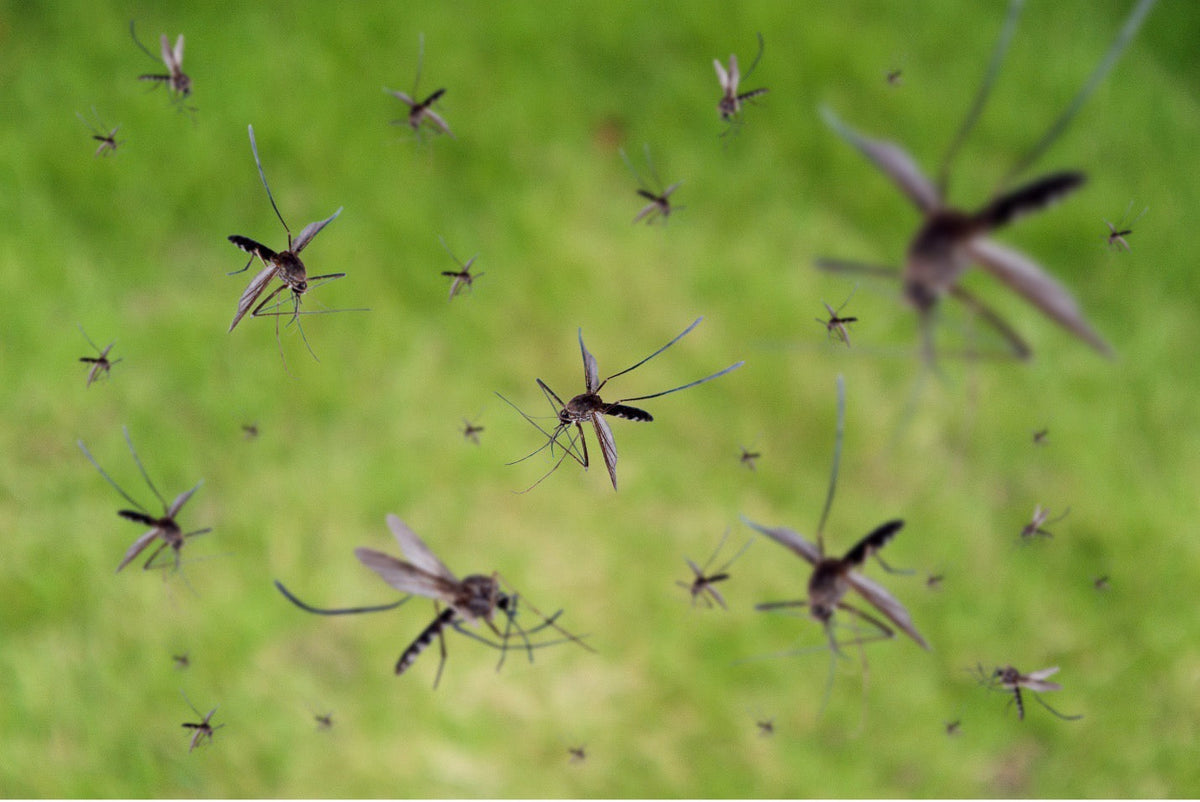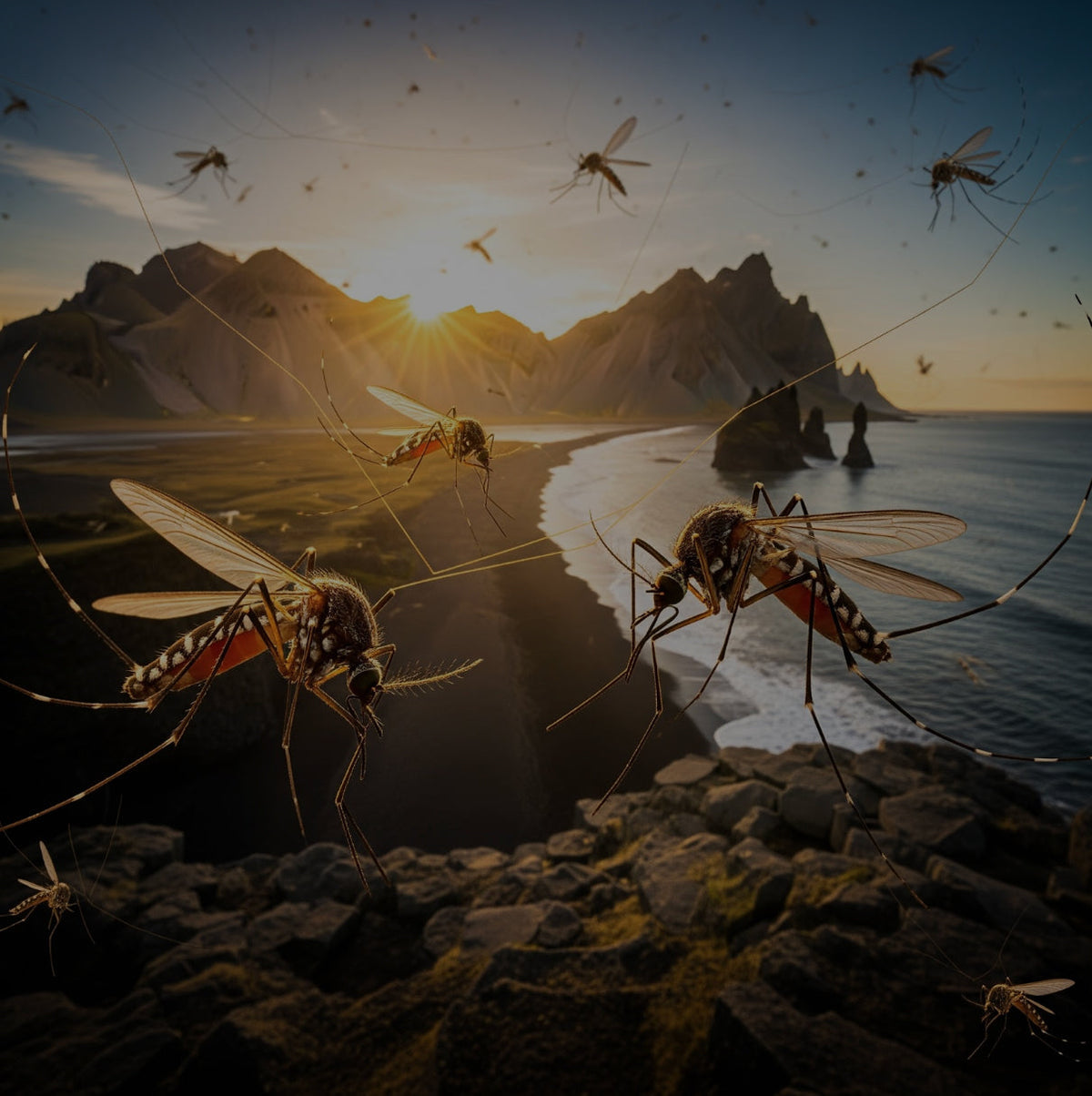
Identifying Mosquito Breeding Sites: Eliminating Sources of Standing Water
No one likes mosquitoes. Not only can they be an annoying pest that can ruin your evenings during the warmer months of the year, but they can also carry harmful diseases that can cause serious illness. As a result, it's best to avoid these pesky pests in any way possible. However, one factor that causes mosquitoes to be a nuisance is their ability to breed practically anywhere - including standing water on your property. While you may not be able to prevent all mosquitoes from appearing on your property (unless you utilize helpful extermination methods like MosquitoNix® misting systems or fogging treatments) you can greatly reduce the number of mosquitoes that show up during warm weather with a few simple tricks. Read on to learn how you can keep the mosquitoes from biting this year.

How Do Mosquitoes Breed?
To stop mosquitoes from breeding, first you'll need to understand how they do it. The process begins with the female mosquito biting and feeding on the blood of people or other animals. Following this, the female mosquito lays her eggs directly on or near water or wet soil, or at the base of certain plants that remain wet or moist. Even if these locations dry out, mosquito eggs can survive in dry conditions for a few months.
Once the eggs hatch, the larva, known as a "wriggler" emerges. This larva lives in standing water and feeds on bacteria, algae and small crustaceans. Once it has lived and fed long enough, it will develop into a pupa, or "tumbler" which also lives in the water but no longer feeds. After two days to a week, the mosquito emerges from the pupa and leaves the water to begin the cycle anew.
What Do Mosquito Breeding Sites Look Like?
As previously mentioned, mosquito breeding sites can take on many appearances - but the most common denominator is that eggs, larvae and pupae live in still water. This can be water in a pond, a wet gutter, overwatered plants, birdbaths, trashcans and even locations in the soil where rainwater accumulates. Essentially, anywhere where water can collect and remain for a minimum of a week can become mosquito breeding grounds. This can seem daunting at first, but this simple indicator makes it much easier to find and eliminate mosquitoes with a little effort.

How to Identify Mosquito Breeding Sites On Your Property
One of the easiest ways to identify and eliminate the mosquito breeding sites on your property is to wait for rainfall and find places where water accumulates. You might already be aware of several of these locations, such as a natural dip in the landscape that remains wet for several days to a week at a time. Some locations, however, can be trickier to identify than others.
The day after a rainy day, take some time to walk around your property and take note of any areas where water has accumulated. This can be in household objects that have been strewn about your yard or natural dips and pools in soil and dirt. Stagnant ponds are also mosquito hotspots, and if you have a natural or constructed pond on your property, you'll need to take additional measures to prevent mosquitoes from breeding there over the warmer months. If there is a lack of rainfall, you can also take note of areas where rain could accumulate, like planters, buckets, bowls and other sealed surfaces. Mosquitoes can breed in shallow locations or areas with little accumulated water.

Preventing Mosquitoes from Breeding
Once you have constructed a list of potential mosquito breeding locations, it's time to remove them one by one. First, begin by cleaning your yard of any toys, buckets or objects that can accumulate water. This includes old tires, kiddie pools, gardening equipment and household objects. While it might seem fine to leave these objects outdoors, they are some of the most common mosquito hotspots.
Next, identify any locations that could be cleared of standing water with a bit of maintenance. Clean clogged gutters of leaves, make sure to cover grills or trash cans with lids that allow water to run off and empty plant watering dishes after rainfall. If you own a bird bath or another dish designed to hold water outdoors, consider emptying these dishes once per week or purchasing "mosquito dunkers" - small products that are designed to kill mosquito larvae.
Finally, you'll need to assess areas where water collects on your landscape. These can be plant beds, natural or manmade ponds and low elevation points. If your plant beds are frequently overwatered, you may need to invest in a drainage system that redirects the water. In manmade ponds, consider adding filtration devices or other equipment that helps the water circulate or prevents it from standing. Adding tadpoles, minnows, killifishes and other small aquatic animals that love to eat mosquito larvae can curb your mosquito problem in natural or manmade ponds as well. To solve water accumulation in low-elevation points on your landscape, you may need to add soil to eliminate and even out these plateaus.

Eliminating Your Mosquito Problem
Of course, even with all these tips and tricks, mosquitoes will still find their way onto your property. That's where MosquitoNix comes in. We offer a variety of services to help eliminate mosquitoes and keep them from breeding. Misting systems can be installed on your property, providing permanent mosquito elimination and prevention. Fogging services can help prepare an outdoor area for events that are mosquito-free. We also sell portable mosquito misting systems like MosquitoNix On-The-Go to keep these pests away when you spend time outdoors. Call us today to find out more about our services and get rid of your mosquito problem once and for all.
Leave a comment
Comments will be approved before showing up.





